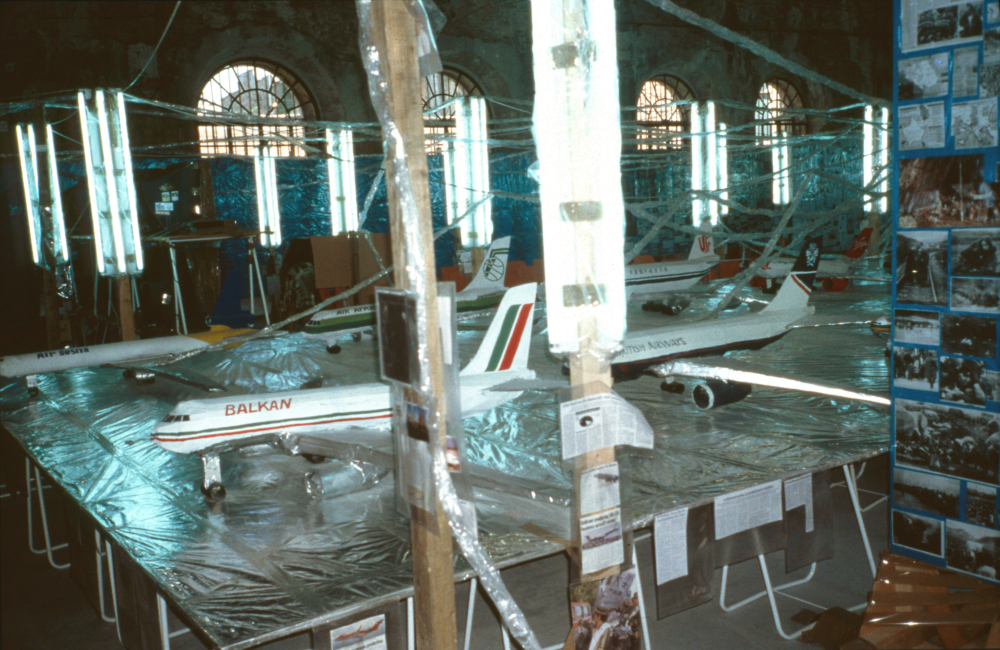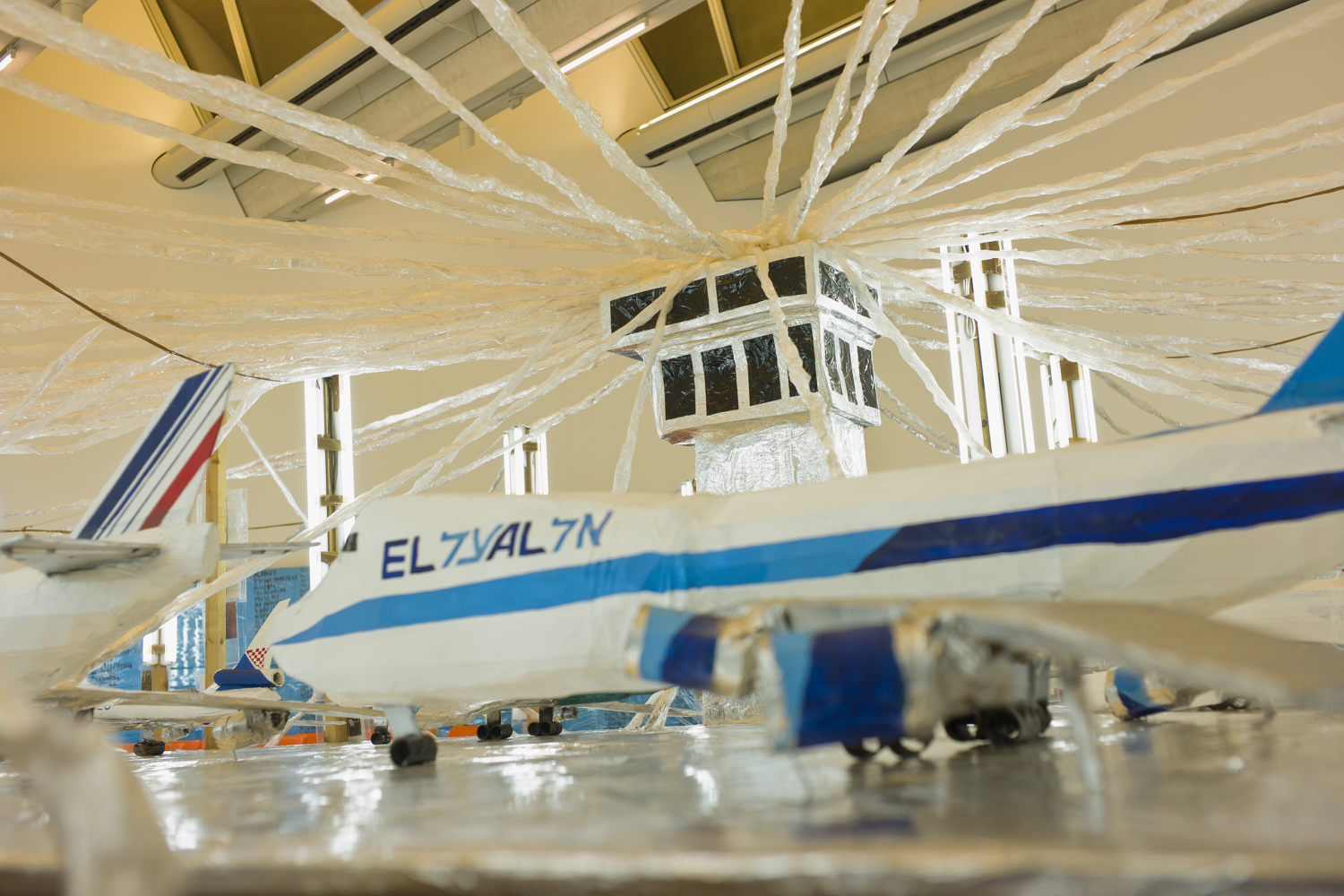
–
Thomas Hirschhorn’s installation Flugplatz Welt / World Airport, which occupies a whole room of the museum, dates from 1999 and was originally produced for the Venice Biennale.
Being an artist means taking responsibility, too much responsibility. I’m not afraid of destabilization, I want to combine what cannot be combined, I want to be the subject, I want to provide forms, it’s necessary to give form to an affirmation, the affirmation doesn’t remain mere theory. Through my work, I want to provide an answer to the question: where are you, comrade? It’s about producing work that has energy, that is powerful, that is a bit biting, it’s not about what art is or isn’t. I use art as a tool, a tool for discovering the world, as a tool to confront myself with reality, and as a tool for deeply examining the period we live in. I am an artist, a worker, a soldier.
— Thomas Hirschhorn, 2002

The Swiss artist Thomas Hirschhorn installed an incredible number of objects reminiscent of an airport over an area of more than 400 m2. One finds not only the runway, the planes in the colors of various airlines, the control tower, and the typical neon airport lighting: Hirschhorn also adds numerous other elements, such as gigantic silver spoons, altars with known-brand shoes, as well as panels on which a profusion of newspaper cuttings evoking a highly varied range of subjects are displayed. These diverse elements were made of inexpensive materials (one of the hallmarks of his work): foils, maps, cardboard and adhesive tape used in abundance, completed with utilitarian objects such as chairs, suitcases and screens.
Hirschhorn’s installations are conceived as collages, immense heterogeneous and complex assemblages that invade the place where they are presented and put it under tension. As he explains, his “two dimensional thoughts” are thus translated in space “to remain in reality”. The choice of everyday, “precarious” materials, in opposition to noble, “exclusive” materials (which exclude, in the literal sense of the term), is part of his strategy of not placing a barrier between the artwork and the viewer and of creating a direct relationship of equals. Rejecting the idea of an æsthetic and sanctified presentation, too elitist according to him, he aims to breathe energy which helps establish a dialogue with the artwork. Hirschhorn believes in the autonomy of art, effacing himself from this dialogue with the viewer. The disordered profusion of elements and the overabundance of information in his artworks become a mirror of reality and push visitors to orientate themselves by themselves.

Flugplatz Welt / World Airport deals with the question - so determinant today - of globalization and its collateral, often paradoxical effects: “Macro-isolation, selfisolation, and particularities - ethnic, religious, social, linguistic, cultural... - local divisions, regional and private wars, war lords all tend to separate one entity from another. This shrinkage and splitting is what I wished to explore in Flugplatz Welt / World Airport”, the artist explains. However, certain elements provide guidelines (of reflection): the altars represent specific dimensions (spirit - body - soul), the assorted books invite reading, while the silver spoons are meant to be an ironic reflection of the expression according to which some are born with them in their mouths, tracing a demarcation line in this globalized and interconnected world which decides between winners and losers. Flugplatz Welt / World Airport is not however an overtly political artwork in the sense that it doesn’t take a position and, because of its plethoric nature, denies any explicit and singular reading.
Thomas Hirschhorn was born in 1957 in Berne, Switzerland, he lives and works in Aubervilliers, France.


